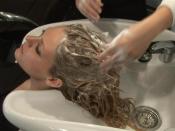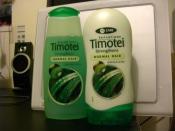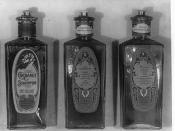THE WONDERFUL HYGENIC WORLD OF SHAMPOO
Everyone who uses shampoo could tell you that their main factors in choosing a shampoo to use are smell, look, and price. People are misinformed about shampoo and how to tell the difference between a good shampoo and a bad one. The main point of shampoo is to cleanse your skull of residue that is picked up either from hair products such as hair spray, gel or moose, as well as the dirt in the air, and perspiration. Shampoo is something that all of us use on a regular basis If you look in any store you will find a huge variety of different types of shampoos all claiming to have the one ingredient that makes it the top among it's competitors. Just what are the ingredients in a shampoo? What do they do that they are needed? Is there any one product that is better than the rest?
When looking at shampoo's ingredients, one thing you have to focus on is surfactants.
The major types of surfactants are anionic, cationic, nonionic, and amphoteric. Surfactants with a positive charge are called cations, and ones with a negative charge are called cations. An example of this would be sodium chloride. Sodium forms positive ions upon dissolving in water, while chlorine makes negative ions. They attract to each other. Surfactants tie in with shampoo and all other hygiene products, because anionic surfactants are the most widely used detergents in all personal hygiene products. They are inexpensive, excellent cleaners, and rinse from hair easily. The only con about them is that they can be harsh and irritating to the scalp. This problem is taken care of in most shampoos, by added ingredients that help o prevent irritation to the scalp. If used in high concentration, which they...


